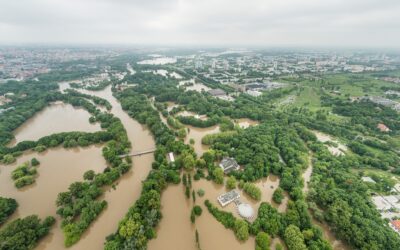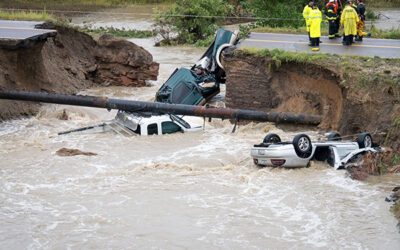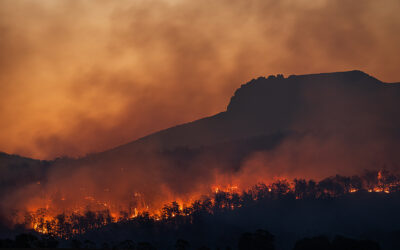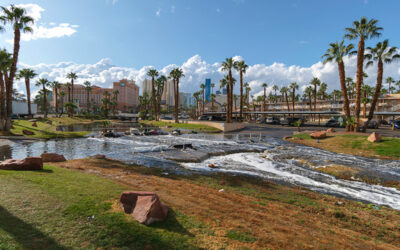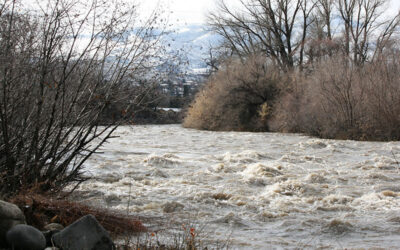A new study in Science Advances finds that compounding effects of flood drivers can complicate and exacerbate the risk of extreme floods in watersheds around the world. DRI’s Guo Yu, Ph.D., assistant research professor of hydrometeorology, co-authored the research.
Preparing for the Floods That Follow the Fires
A conversation with Guo Yu and Jeremy Giovando about their new research examining post-fire flood frequency. The study expands on previous frameworks to account for the compounding impacts of repeated wildfires on flood risk, using a southern California watershed as a case study.
Climate Change Will Increase Wildfire Risk and Lengthen Fire Seasons, Study Confirms
Scientists examined multiple fire danger indices for the contiguous U.S. to assess the impact of climate change on future wildfire risk and seasonality.
A Changing Flood Recipe for Las Vegas
Researchers found that urbanization and climate change are changing the strength and seasonality of flooding in the Las Vegas region.
Study Explores Uncertainties in Flood Risk Estimates
In a new study, Guo Yu, Ph.D., examined the most common drivers (rainfall, snowmelt, and rain-on-snow events) of historic floods and investigated the impact of different flood types on the resulting flood frequencies.
